Disclaimer
Léon-Augustin L'hermitte
French Naturalist Painter and Printmaker
1844 - 1925
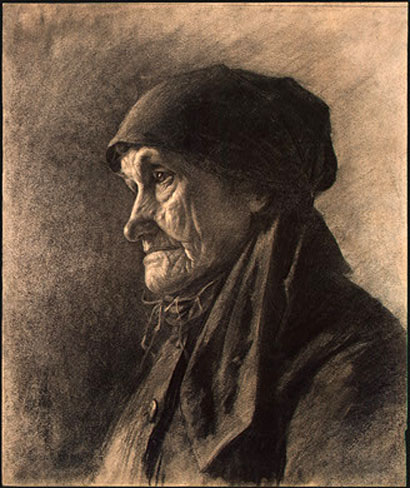
An Elderly Peasant Woman: ca 1878
by Léon-Augustin L'hermitte
Léon Augustin L'hermitte was a French painter and etcher of the late nineteenth century. A student of Lecocq de Boisbourdran, he was a realist artist whose primary subject matter was of rural scenes depicting the peasant worker.
He gained recognition after his show in the Paris Salon in 1864.
His many awards include the French Legion of Honor (1884) and the Grand Prize at the Exposition Universelle in 1889.
L'hermitte's innovative use of the then contemporary media of pastels won him the admiration of his contemporaries. Vincent Van Gogh wrote that "If every month Le Monde Illustré published one of his compositions... it would be a great pleasure for me to be able to follow it. It is certain that for years I have not seen anything as beautiful as this scene by L'hermitte... I am too preoccupied by L'hermitte this evening to be able to talk of other things."
L'hermitte's etchings and paintings are housed in museums around the world including Boston, Washington, Chicago, Montreal, Brussels, Rheims, Paris, Moscow and Florence.
Léon Augustin L'hermitte - Wikipedia
Léon Augustin L'hermitte Biography
1844 Born in France
1863 Went to Paris and became a student at the Petite Ecole where he studied with Horace Lecoq de Boisbaudran
1864 L'Hermitte sent his initial entry to the Salon in 1864 at the age of 19
1874 Lhermitte won a third-class medal in the Salon for his painting La Moisson (Musee de Carcassonne)
1881 The Tavern, exhibited in the Salon
1885 He continued to exhibit charcoal drawings and paintings regularly and pastels
1889 Won Grand Prix at the Exhibition Universelle
1890 Awarded the Diplome d'honneur at Dresden and the Legion d'honneur
1890 Founding member of the Societe Nationale des Beaux-Arts
1894 Officer of the Legion d'honneur
1925 Died
L'hermitte showed artistic talent at a young age and his upbringing in the rural village of Mont Saiint-Père in Picardie provided him with the subjects and landscapes that would become the staples of his oeuvre. In 1863 left his home for the Petit Ecole in Paris where he studied with Horace Lecocq de Boisbaudran. It was in that studio that he formed a life-long friendship with Cazin and became acquainted with Legros, Fantin-Latour, and Rodin. He made his debut at the Salon of 1864 where his charcoal drawings revealed that he had a profound sense for nature. His first work, Bords de Marne près d'Alfort, caused a sensation. L'hermitte soon gained a reputation for being as capable with oils as with pastel and charcoal. For his entries, he won a third prize medal in 1874, a second prize medal in 1880, and a Grand Prize award at the Exposition Universelle in 1889. One year later, he was awarded a Diploma of Honour at Dresden. Lhermitte was awarded the Legion of Honour in 1884, was made an officer in 1894 and a commander in 1911. He was elected a member of the Institute in 1905. In 1890 he was one of the founding members of the Société National des Beaux-Arts, of which he was later elected Vice-President.
Bords de Marne près d'Alfort

L'hermitte was born during a time that heralded a vast change in the urban and rural landscapes of France. The country was speeding into the modern world as urban spaces became more dense, industrialized, and teeming with activity. France was divided between a more educated, progressive North and a rural South of farm and field laborers. People rarely travelled between the regions and, as Paris became more and more cosmopolitan, Parisians progressively saw the south as a bucolic idyll frozen in time and impervious to change.
Harvest: 1872
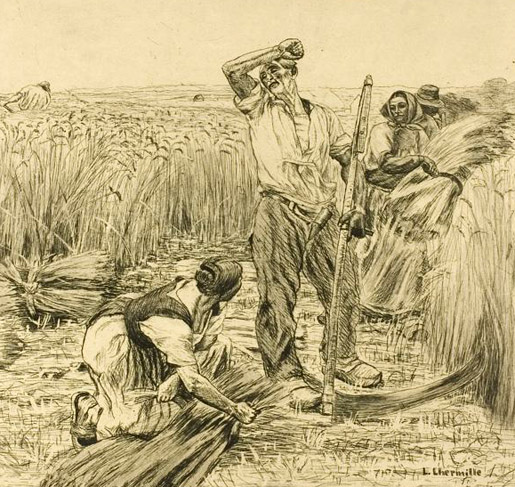
Urban townspeople imagined rural field-hands as robust, diligent peasant workers, too philistine for the metropolitan world. The urban elite increasingly used stereotypes of the countryside for their own agendas, creating a form of induced romantic nostalgia. As the cities rapidly processed advances in industry and dealt with a burgeoning population, many artists and writers used images to convince urban citizens to view the rural south as a land romantically caught in the past. The peasants were a reminder of life before the industrialized city, a seemingly unchanging people of the earth.
La Famille
(The Family): 1908
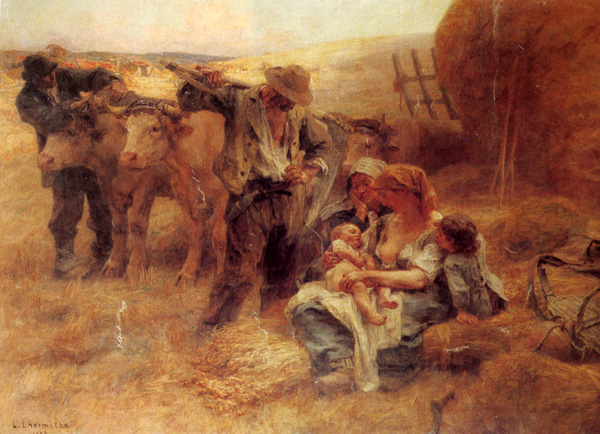
A leading member of the School of Social Realism, L'hermitte painted almost exclusively, scenes taken from rural life. The most profound influence upon his work was certainly Jean François Millet, the creator of the Angelus and many other remarkable works, yet, contrary to this, he clearly remained true to his original style of creating beautiful, light-filled pictures in the Barbizon Tradition. L'hermitte adopted early on the method of peinture claire similar to that of the Impressionists, except in a more traditionally academic style. He was a talented artist, much respected by his peers, who was also quite commercially successful. Van Gogh wrote of him: "He is the absolute master of the figure, he does what he likes with it - proceeding neither from the color nor the local tone but rather from the light - as Rembrandt did - there is an astonishing mastery in everything he does, above all excelling in modeling, he perfectly satisfies all that honesty demands."
L'hermitte continued to create works in the French rural tradition until his death in 1925, the last survivor in an illustrious group of artists.
Leon Augustin L'hermitte on artnet
Léon Lhermitte was born in the Aisne and lived there until he was about twenty, which explains his deep attachment to rural life and the focus of his prolific production on the work and daily life in the countryside of his time.
He came from a humble family and for many years earned his living with minor engraving work in France and England, before winning recognition at the Salon from 1874. Fame came after 1880, when the artist successively entered several large paintings depicting the life and people of his native village of Mont-Saint-Père. 'The Cabaret' in 1881, this 'Paying the Harvesters' in 1882 and 'The Harvest' in 1883 used the same figures which can be identified from one painting to another.
La Paye des Moissonneurs
(Paying the Harvesters): 1882
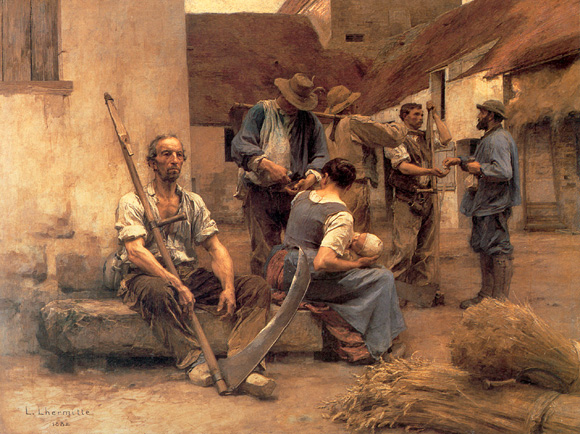
The subject and technique of 'Paying the Harvester' belong to the Naturalist movement. However Lhermitte did not make this painting into a manifesto against the grinding toil of agricultural laborers as Jules Bastien-Lepage did in his painting Haymaking in 1877, also in the Musee d'Orsay. He was content with a bald statement devoid of polemics in which he uses his great artistic skill, from the remarkably balanced overall composition to the extremely precise rendering of the tiniest details.
Musée d'Orsay
Various Works of Léon Augustin L'hermitte
A la fontaine ca: 1914

A la Fontaine-at the Fountain: 1895
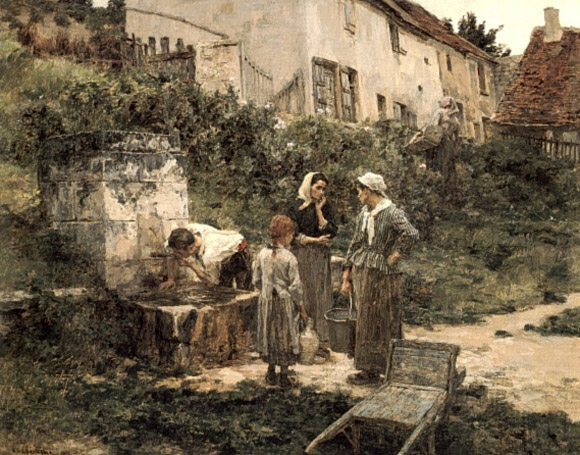
A Rest from the Harvest
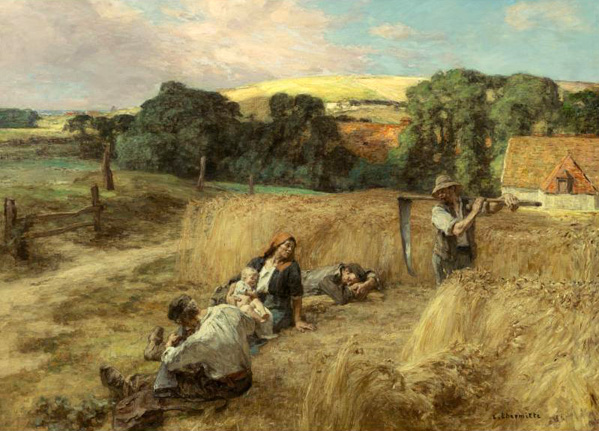
A Water Drawer

A Woman Filling her Bucket at a Well
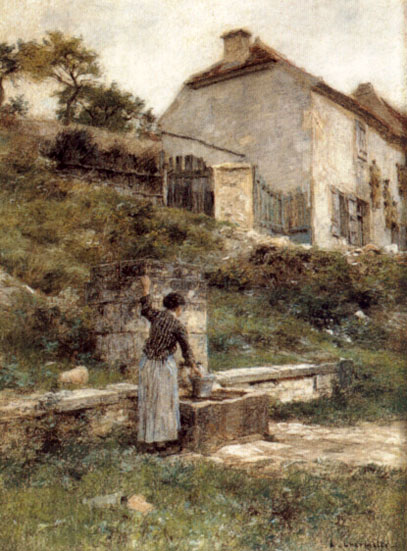
At the Well
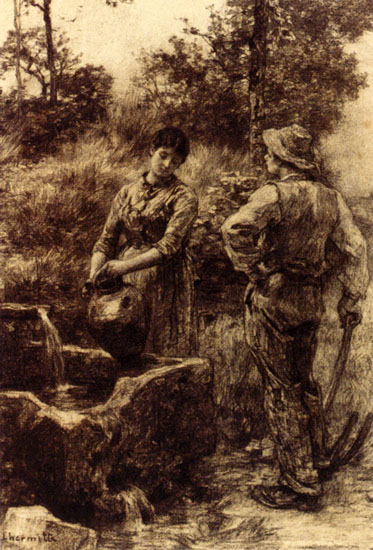
Au Bord de La Riviere
(By the Banks of the River)
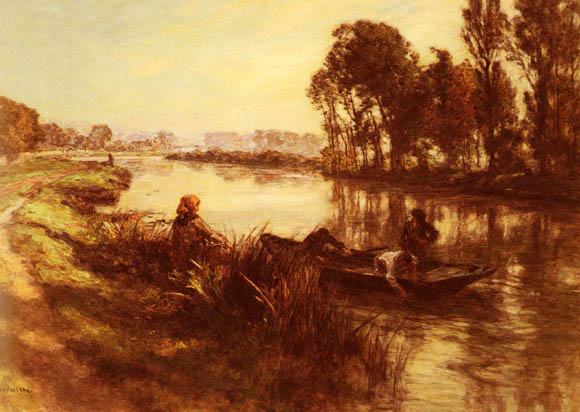
Au Jardin, Charteves, Rres De Mont-Saint-Pere
(In the Garden, Close to Mont-Saint-Pere: 1894
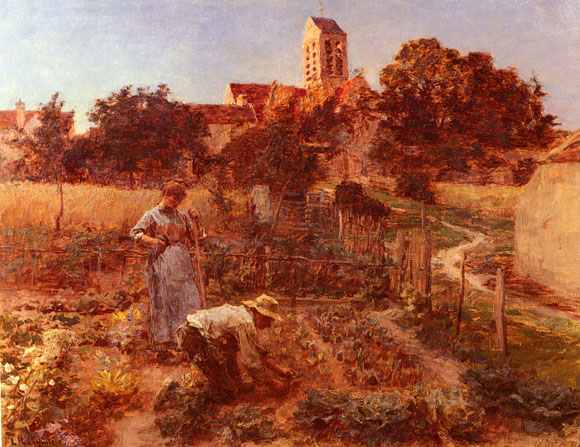
Au Lavoir

Avril
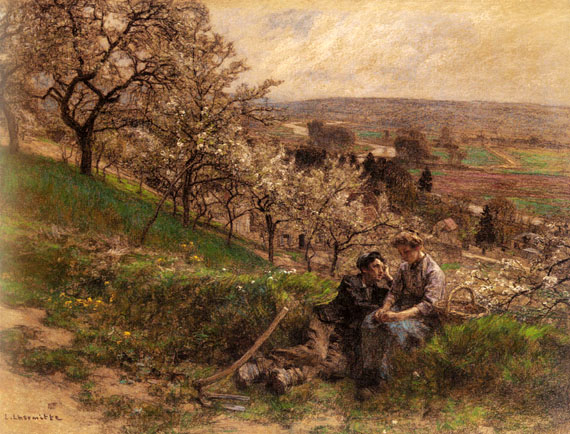
Breton Peasants Buying Fruit at Landerneau
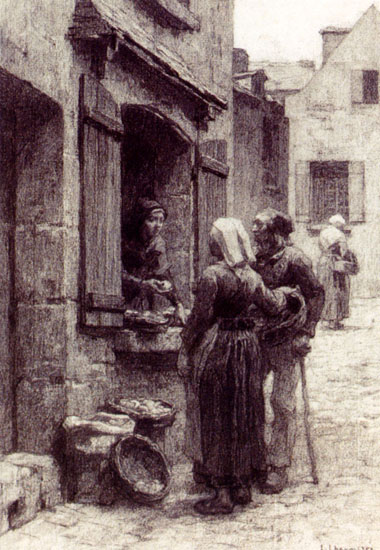
Chaumiere, Normande

Chelles
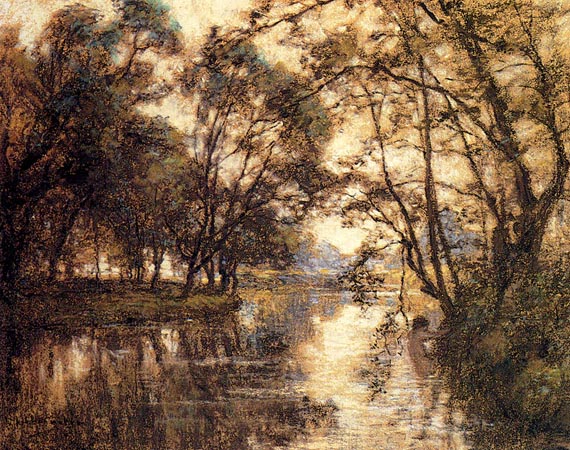
Communiantes defilant dans une eglise de village

Construction d'une Meule
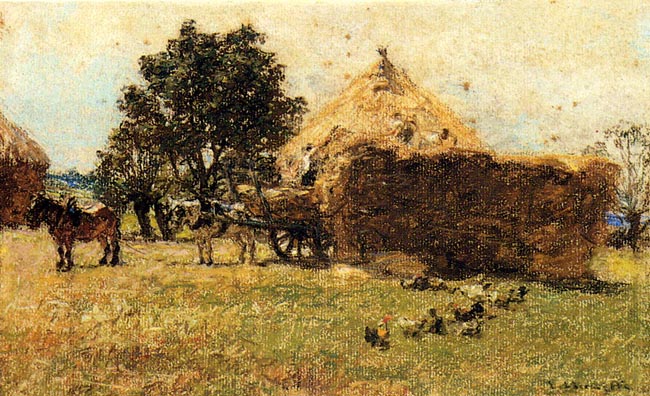
Deux baigneuses au bord d'un etang: ca 1893
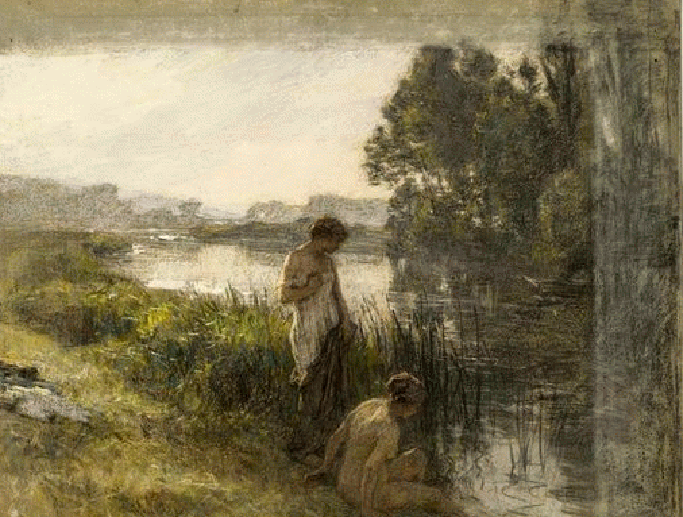
Figures by a Country Stream
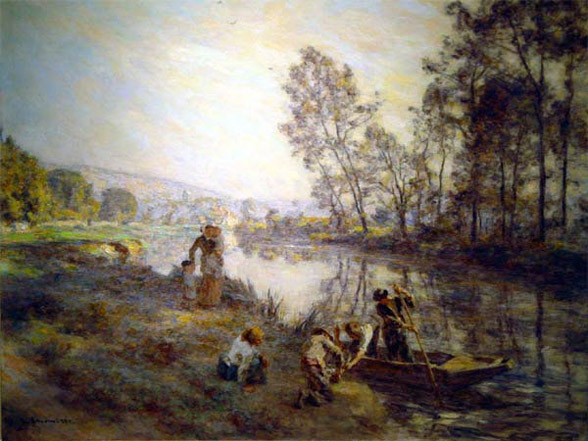
Fish Merchants in the Hall of Saint-Malso

Haymakers
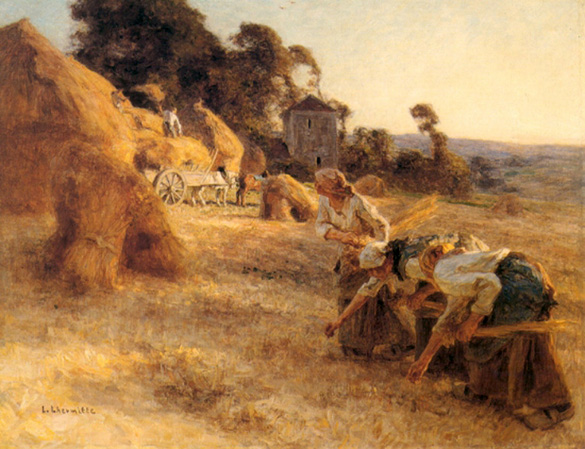
Haymakers Resting
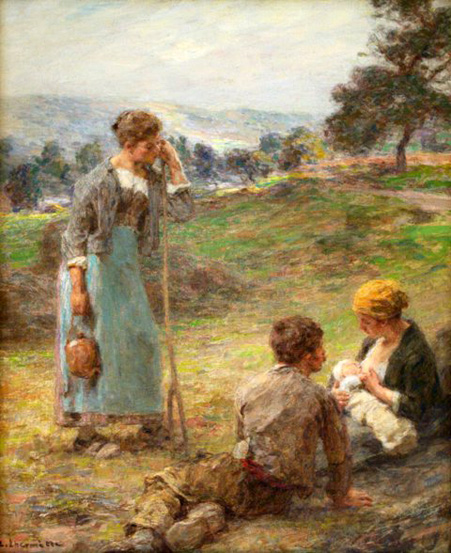
Haymakers
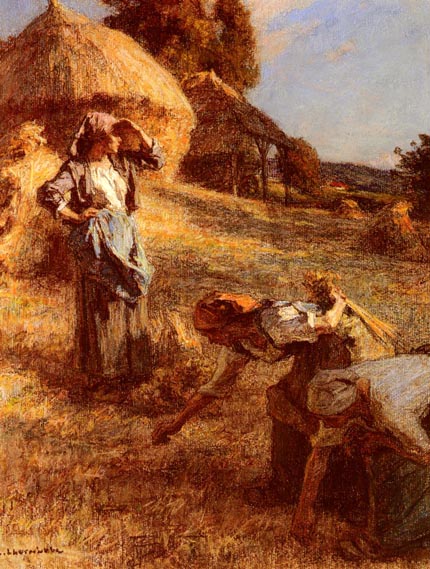
In from the Fields
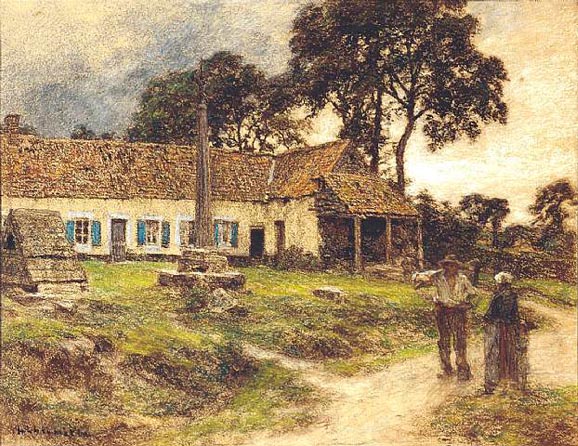
Jeune Mere (Young Mother)
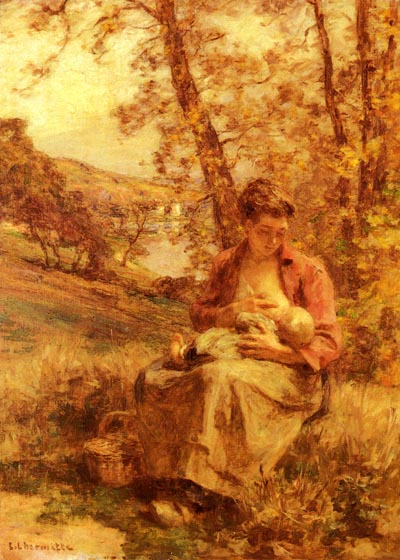
La Faneuse

La Fenaison: 1908

La Ferme de Sombre
(The Sombre Farm)
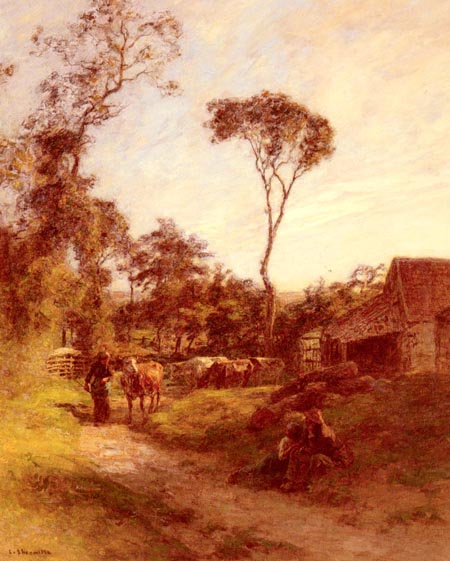
La Lecture
(Reading Time)
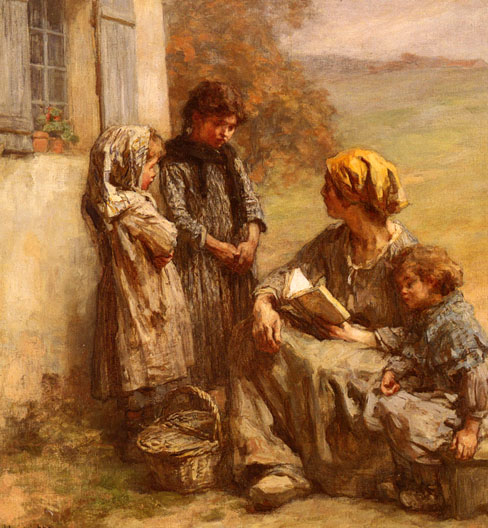
La Leton de Claude Bernard
(The Lesson of Claude Bernard): 1899
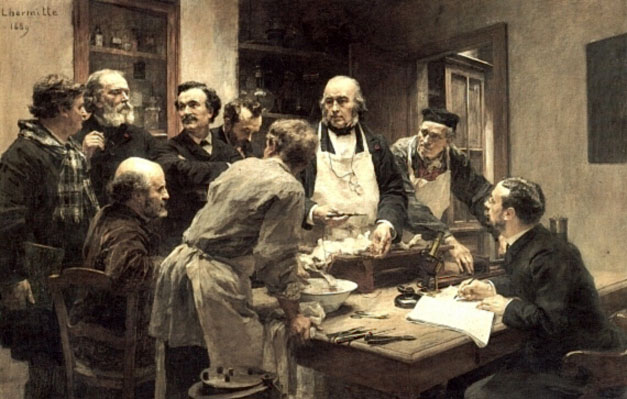
La Leton de Lecture
(The Reading Lesson): 1912

La Marne
(The Marne): 1923
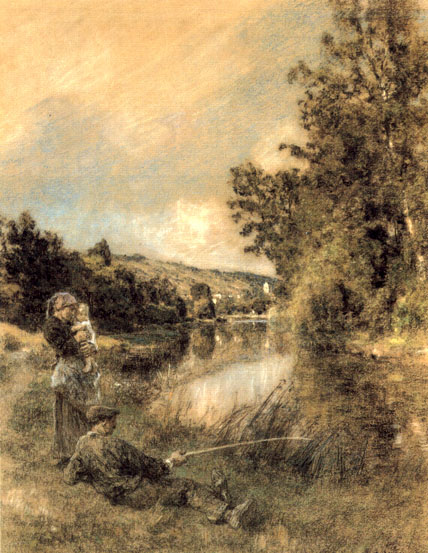
La Moisson au Ru Chailly
(The Harvest at Ru Chailly): 1891
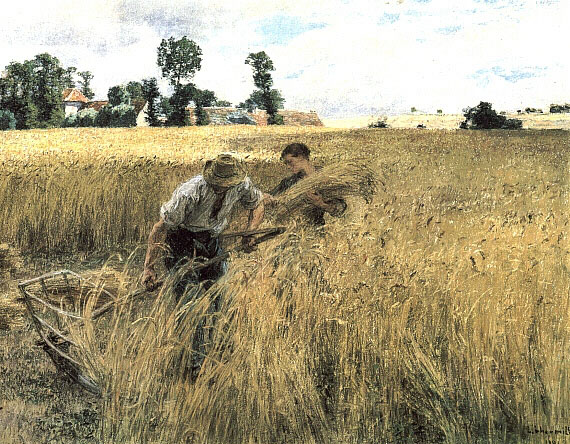
La Moisson pres de la Marne
(The Harvest by the Marne): 1910
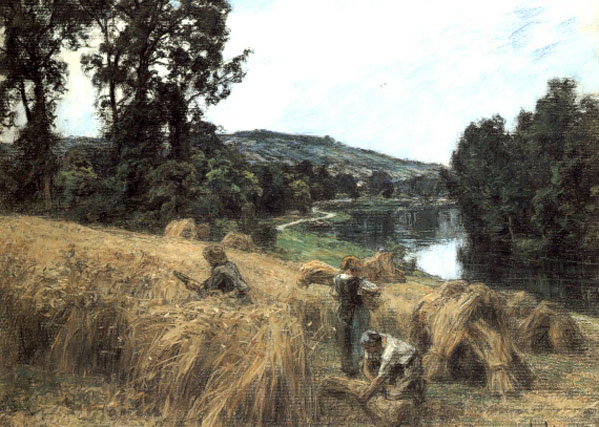
La mort et le bucheron
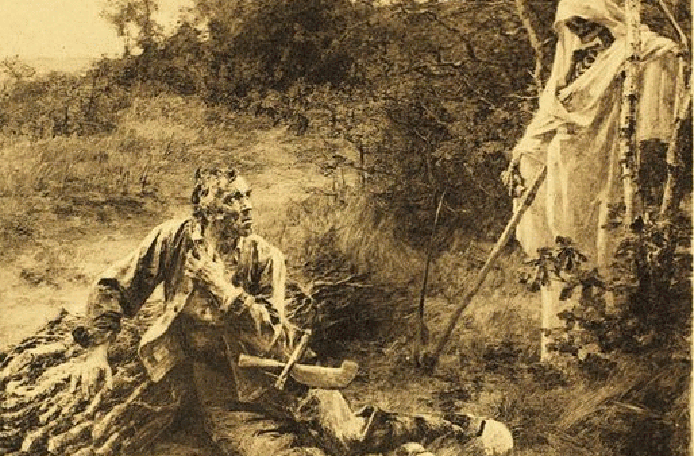
Landscape with a Peasant Woman Milking a Cow
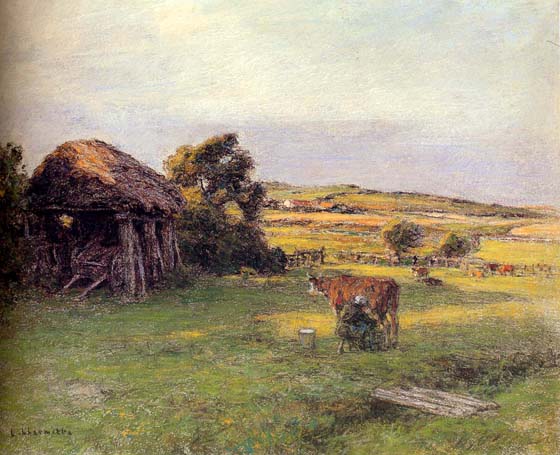
Lavandieres au Bord de La Marne
(Washerwomen by the Banks of the Marne)

Laveuses des Bords de La Marne
(Washerwomen by the Banks of the Marne)
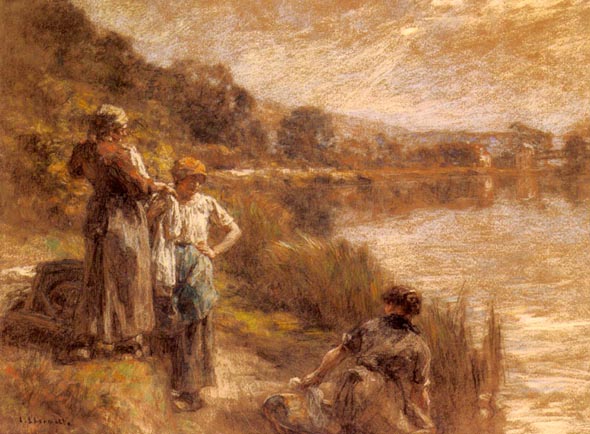
Laveuses au Soir: 1922
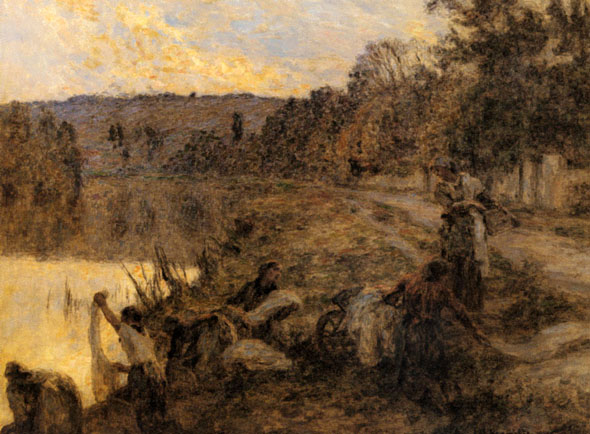
Laveuses le Matin
(Waherwomen in the Morning)
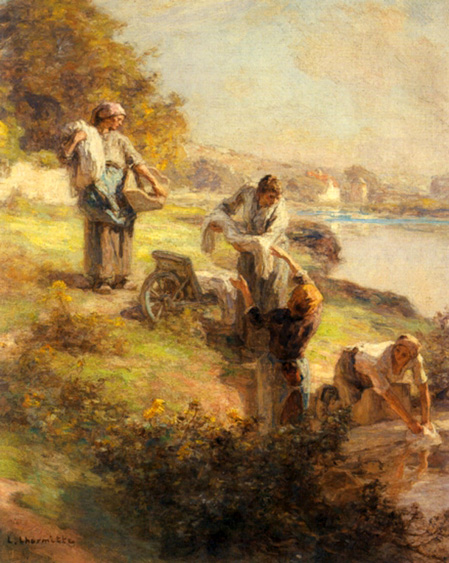
Laveuses le soir
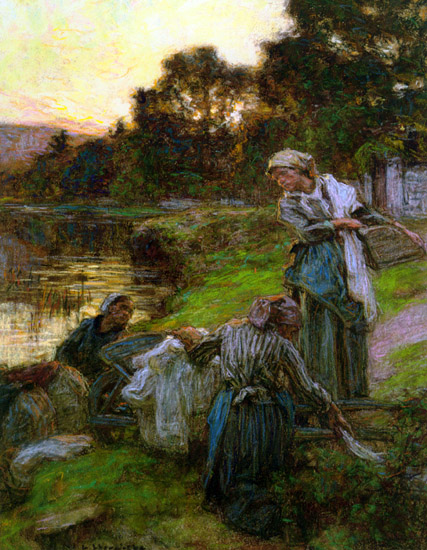
Le Benedicite au Chaussin Pres de Vichy

Le Dejeuner du Bucheron: 1918
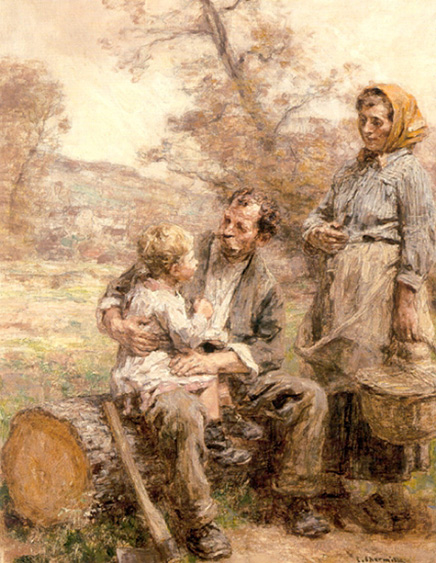
Le Lavoir Pres de La Ferme D'Erlan (Pas-de-Calais)
(The Laundress of Erlan Farm: 1913
_The_Laundress_of_Erlan_Farm_1913.jpg)
Le Marche de Chateau-Thierry
(Chateau Thierry Market: 1879

Le Reveil du Faucheur: 1899

Les Glaneuses
(The Gleaners): 1898
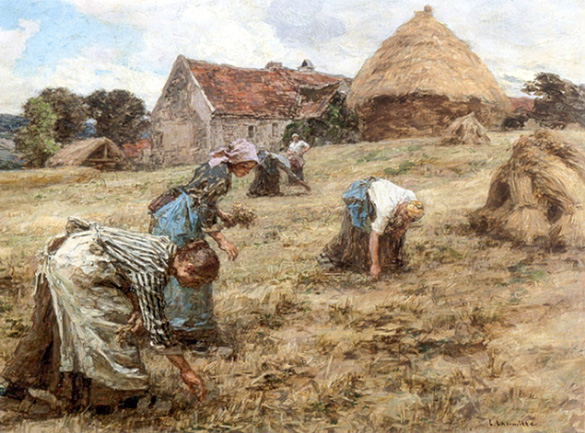
Les Glaneuses
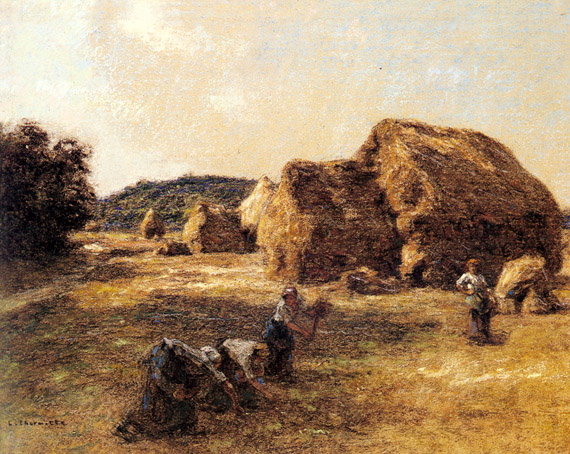
Les Pecheurs
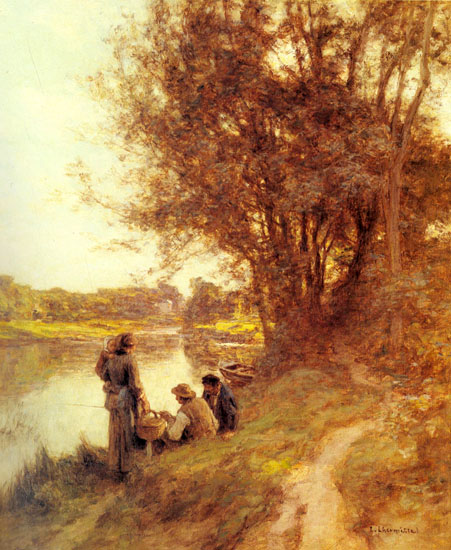
Maternite ou L'Heureuse Famille
(Maternity or The Happy Family): 1899

Mezy
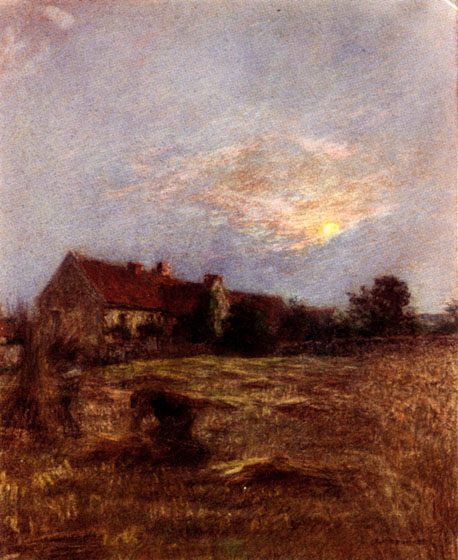
Moissonneur buvant a la gourde ou la soif
(Drinking harvester has the gourde or thirst): 1904
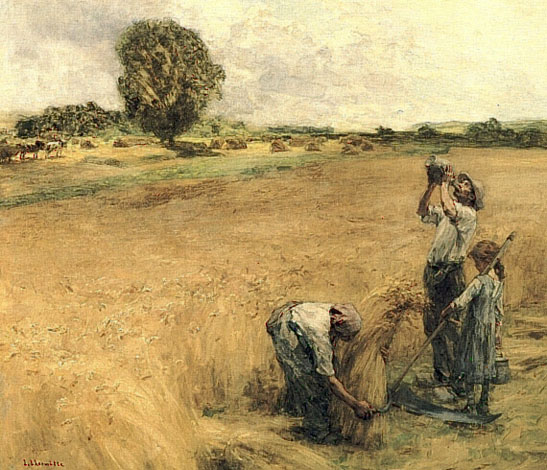
Moissonneurs a Mont-Saint-Pere
(Harvesters at Mont Saint Pere)

Paysans Discutant a Mont Saint Pere
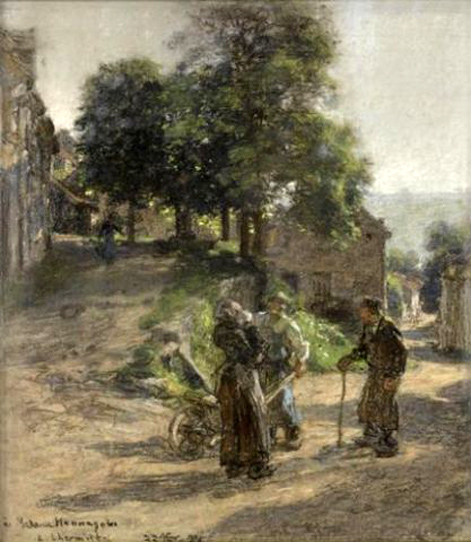
Portrait of Edouard Manet at His Easel

Ppelerinage Pour Lenfant Malade:
Eglise de Plein-Pied, Bourges

Pres de La Fontaine
(Near the Fountain)
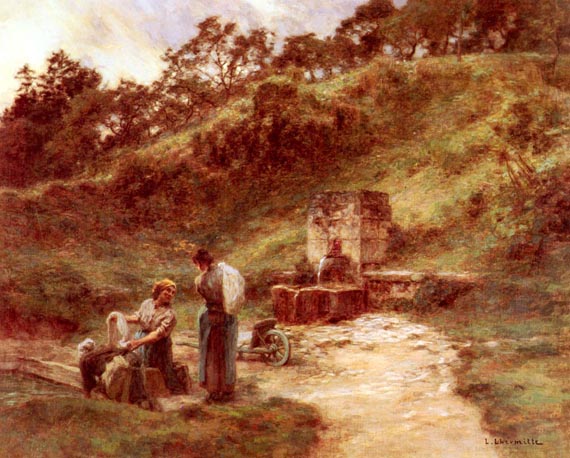
Puiseuses d'eau

Sainte Claire Deville: 1890
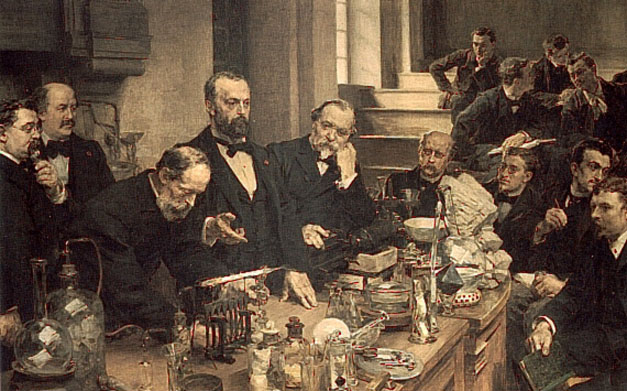
Shepherd and Sheep
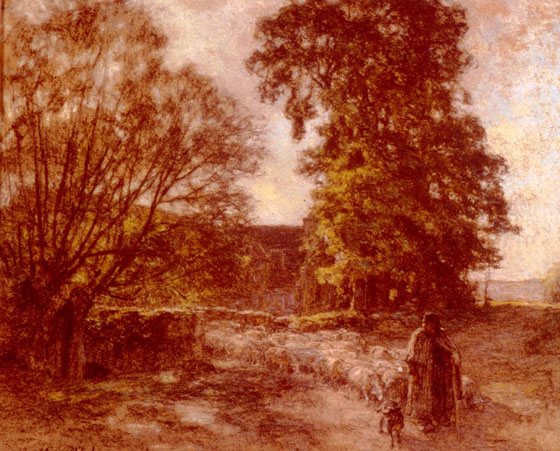
Sortie de Leglise Saint-Melaine a Morlaix
(Leaving the Saint-Melaine Church in Morlaix): 1875
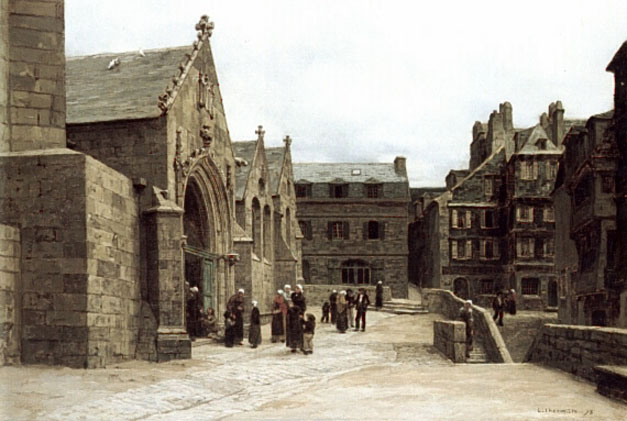
Supper at Emmaus: 1892
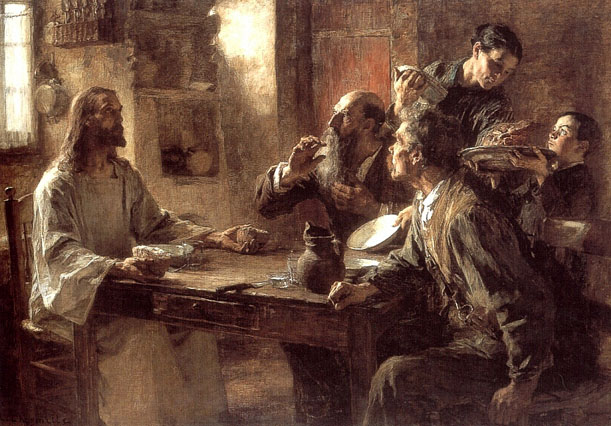
The Harvesters: 1889
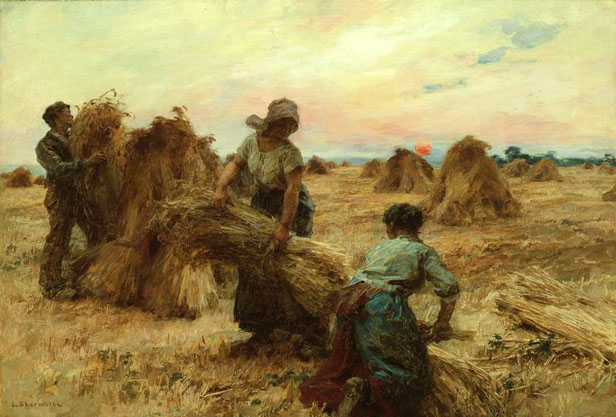
The Butter Market
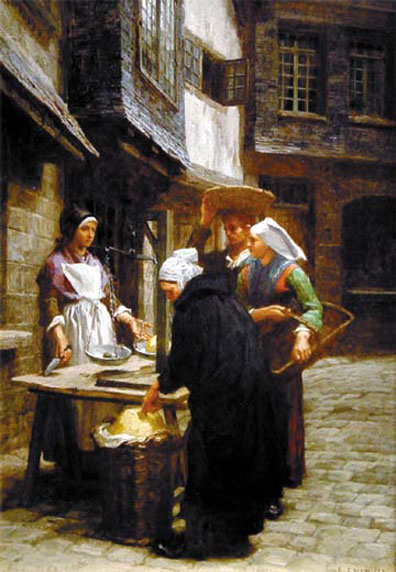
The Gleaners: 1901
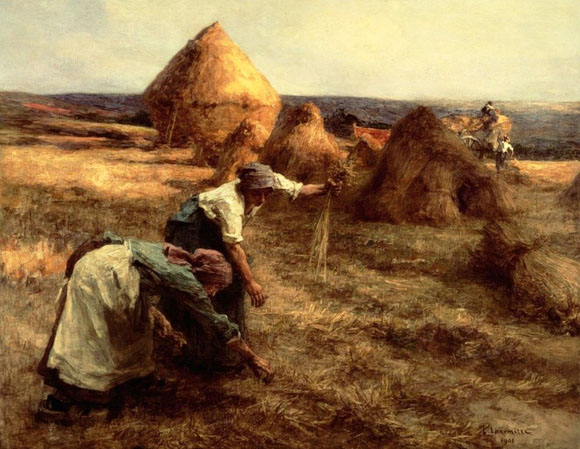
The Harvest
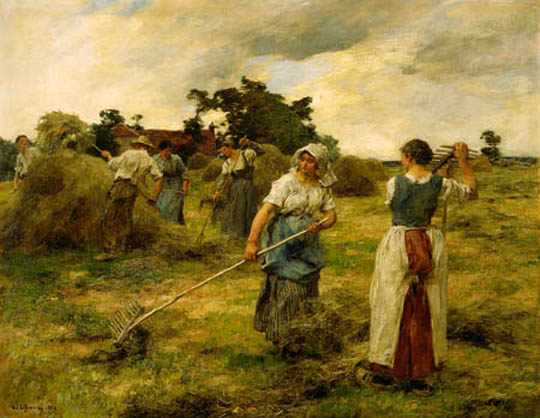
The Harvesters
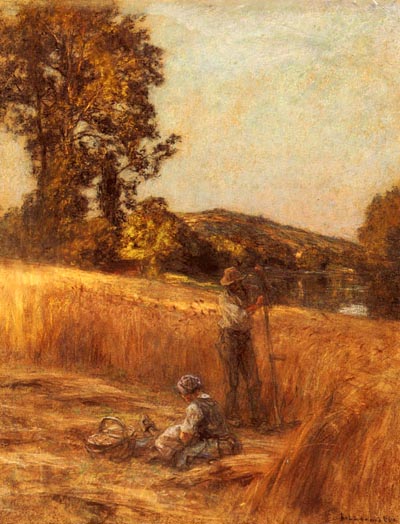
The Haymakers
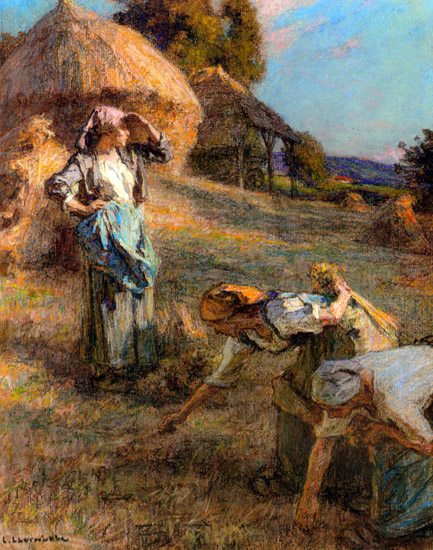
The Lectern: 1871
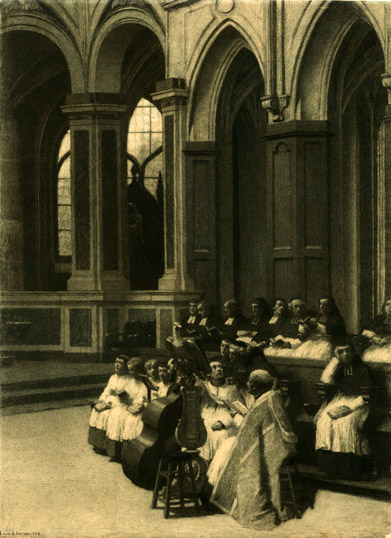
The Market Place of Ploudalmezeau, Brittany France: ca 1877
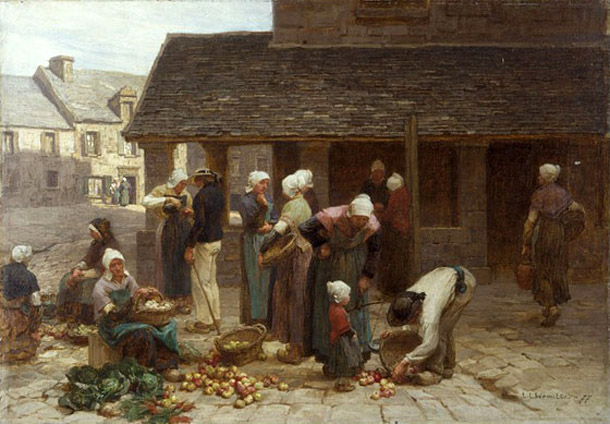
The Reaper's Child

The Spinning Wheel

Troupeau au bord de l'eau
(Herd at the Edge of the Water: 1904
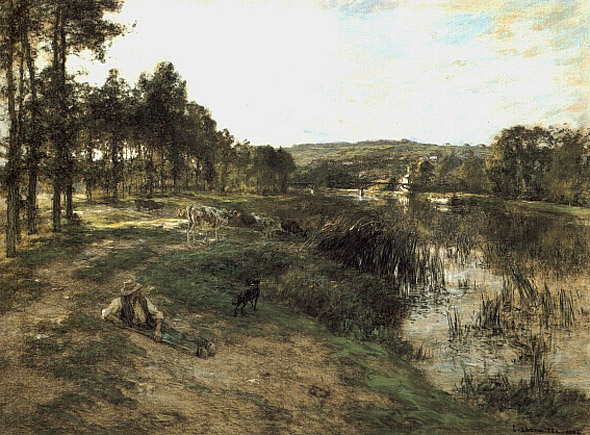
Washday
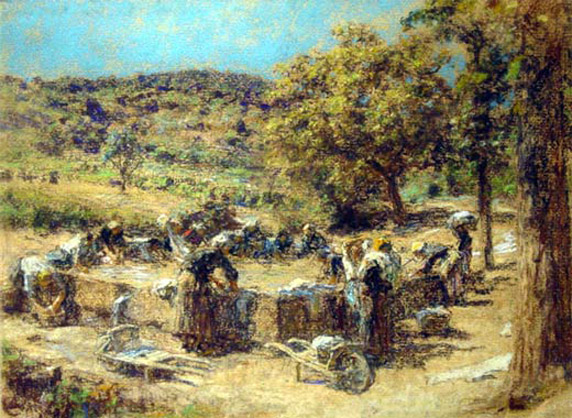
Washerwomen at a Stream with Buildings beyond
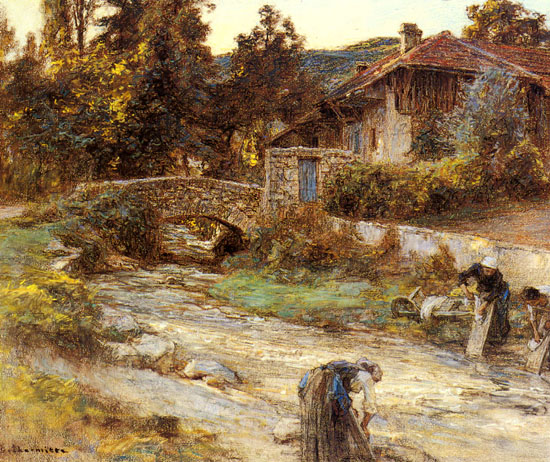
Washerwomen Setting the Linens out to Dry
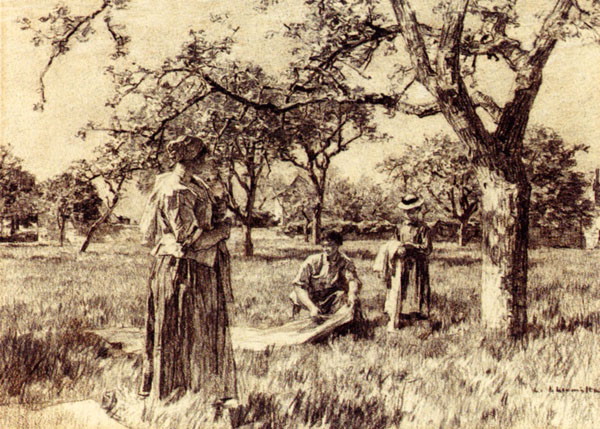
Women Praying in Church: 1875-1885
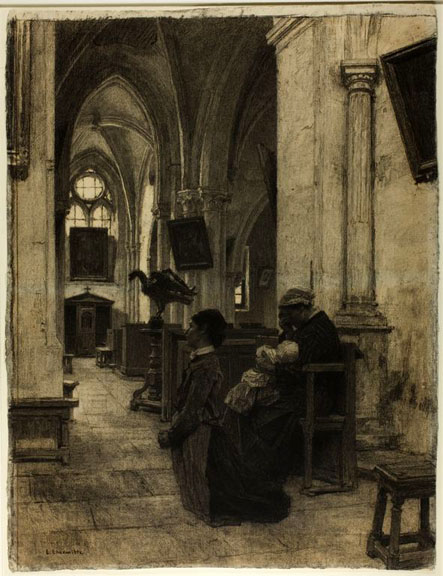
Source: Art Renewal Center
Source: Leon Augustin L'hermitte Online
This page is the work of Senex Magister
Return to Pagina Artis
Return to Bruce and Bobbie's Main Page.















































_The_Laundress_of_Erlan_Farm_1913.jpg)
































